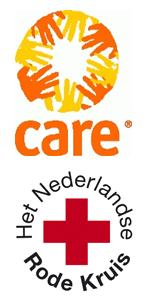Resilient WASH systems in drought-prone areas
Resilient WASH systems need to be able to cope with changes in the availability of water. This section explores what what techniques can be used to improve water availability over space and time in areas not only prone to drought and changing climate variability, but also those areas with deteriorating water availability due to increasing water demands and human influences. This section focuses on water supply and non-motorized irrigation in rural areas for populations of up to 5,000 people. Resilience is a concept used to describe how to make water systems more robust in terms of water availability, thereby reducing the vulnerability of people that rely on them.
Both technical and non-technical components are important in discussing how to make water systems resilient. In many cases, it is not technical issues which cause projects to become unsustainable, but non-technical issues such as management, social relationships and community dynamics. The technical measures can be divided in three types:
- Improving the availability of water over space (more points of water in an area means better access for people and livestock)
- Improving the availability of water over time (more water available to span increasing length of dry seasons, or, relevant to agriculture, short dry spells)
- Improving techniques that influence water demand
Contents
Availability of water over space
o Local recharge, retention/storage and re-use of water, which are increasingly being seen as the most important adaptations for ensuring water availability and food security to rural and urban populations, especially in developing countries in the face of climate change.37 o Various methods for gaining more water from rainwater and groundwater sources, some of which are innovative and need further research. o Methods on how to limit impact on existing saline groundwater and how to recharge/dilute it. o Methods to increase available water to communities through treatment of non-potable saline water. o Ways to improve handpump sustainability since this affects water availability in many areas.
Availability of water over time
Improvement of the availability of water over time (e.g. more water available to span increasing length of dry seasons, or even short dry spells when considering agriculture): o Methods to improve the siting and construction of physical structures in order to make them less prone to failure and more efficiently used. Such techniques may also apply in general (e.g. key methods to prevent sub-surface tanks from leaking will also apply in areas not prone to drought) – however, they are included insofar that they help to improve reliability of water availability. o Suitable storage methods that take into account the high rain intensity that falls for short time periods in many areas – such storage needs to be able to not only store enough volume of water to last through many months of dry season and/or drought, but also needs to be able to conserve evaporation given the high PET rates in many areas. Suitable management of a variety of water sources, where for example open water sources are used first so that most is used rather than evaporated, leaving other stored water for later.
Influencing water demand
o Water-saving technologies and irrigation practices o Re-use techniques o Drought-resistant crops

